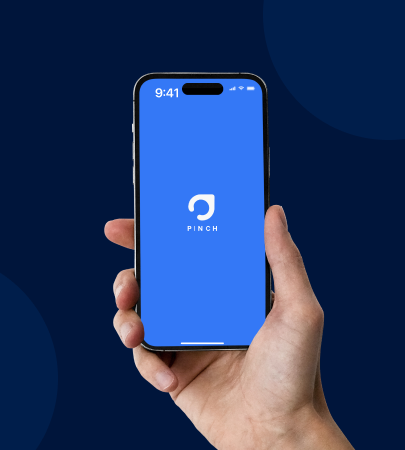Make your products stand out with User Research methods
User research is a fundamental component of creating successful and user-centric products. It involves systematically gathering information about your target audience, their behaviors, needs, and preferences to inform the design and development process. Here’s a comprehensive body text highlighting the importance and key aspects of user research

Ready-to-go services to get your product to market, fast
Simply put, User Research methods provide you with insights that help you optimize product development at every stage to deliver user-fit outcomes.

3-4 Hours
Define the Problem
Visualize your problem & get a n insight into all we need to know before building the actual product.

1st Week
Research and Analysis
Answer critical business questions & get your product to market via design, prototyping, and testing ideas with users.

2nd Week
Ideation
Define your product development roadmap by locking requirements, features, deliverables, & costs to ensure success.

3-5 Months
Prototyping
An interactive set of UI/UX designs or Hi-Hi mock-ups to help you understand and visualize the end product.
LET’S TALK
10 years of building digital products and we are just getting started!
Power up your product design with User Research methods
In the dynamic landscape of product design, where user satisfaction is paramount, leveraging robust user research methods is the key to creating products that resonate with your target audience. These methods provide invaluable insights into user behaviors, preferences, and pain points, allowing you to craft a user experience that goes beyond expectations.
Product uniqueness
Observing users and competitors unlocks insights to develop unique solutions to fill market niches.
Retention improvement
User Research gives you a deep dive into customer preferences, helping you secure user loyalty.
Boost conversion
Releasing customer-verified products ensures higher chances of conversion and revenue growth.
Churn reduction
Reduce customer churn by testing and avoiding the mistakes of your competitors.
Increase Registration
Improve your product-market fit, offer presentation, and usability to get more users on board.
User base extension
Listen, observe and respond to the needs of users to bring solutions to a broader user base.
FEATURED WORK
Discover how we turn visions into digital success for leading brands and startups
 Mobile logistics
Mobile logistics
Pinch App
Pinch App leads you to captivating spots, ensuring memorable adventures amidst secluded mountains and beaches.
 Website
Website
The Body Shop
Discover a world of beauty with The Body Shop's e-commerce platform. Offering cosmetics, skincare, and perfumes.
 Website
Website
Numbers Om
Browse and purchase registered car numbers with ease, transforming your vehicle into a personalized statement on the road.
 Mobile Logistic
Mobile Logistic
Holidayee
Explore endless destinations, and book online ticketing platforms for hassle-free travel planning. flights, hotels, and activities all in one place.
Choosing the right User Research methods is crucial to customer satisfaction
In the intricate dance of product development, the selection of appropriate User Research methods stands as a pivotal determinant for achieving heightened customer satisfaction. A thoughtful and strategic approach to understanding user needs, preferences, and pain points can make the difference between a product that meets expectations and one that exceeds them. Here, we delve into the significance of selecting the right User Research methods and its profound impact on the overall customer experience.
Discovery Research
Validate the concept for a new release with user perspectives before the actual investment.
Competitor Analysis
By learning from others' mistakes or best practices, your product can outrun the competition.
Usability testing
Test your product principles and design elements against user habits, problems, and expectations.
KPI Booster
Understanding the dependencies and mechanics behind focus areas helps improve KPI performance.
Learn how to conduct a successful User Research process
Our team has vast experience in applying User Research methods to deliver results for our clients. Read below to discover our step-by-step process, which can be implemented at any stage of the development cycle.
Vision Assessment
We start by reviewing, assessing, and collecting insights about your project vision.
Research Proposal
Based on the Vision Assessment, we provide a research plan tailored to your needs and abilities.
Conduct Research
This phase is all about conducting and documenting the User Research and collaborating with you along the way.
Insights Presentation
In the last stage, we provide you with analyzed research insights and product recommendations.
- What are design systems?
- Style guide vs design system?
- What should a design system include?
- How to choose an agency?
- Why design systems mean success
- Who can build a design system
- How to create design system?
What are design systems?
Design systems are comprehensive collections of guidelines, principles, components, and assets that are used to create and maintain cohesive and consistent user interfaces (UI) and user experiences (UX) across different products, platforms, or applications. They serve as a centralized resource for designers, developers, and other stakeholders, providing a common language and set of standards to ensure visual and functional consistency throughout the design and development process.
Style guide vs design system?
A design system is essentially a collection of guidelines, principles, and repeatable components that form a company’s definitive approach to designing and building digital products. When multiple teams work on different parts of a product, or entirely different products, inconsistencies in the look and behaviour of these products become inevitable over time. The adoption of a design system aims to solve this by allowing teams to create better digital products that provide users with a consistent visual and interactive experience across the whole suite.
As well as enhancing the end-user experience, the building blocks and standards in a good design system also substantially improve the lives of design and development teams, delivering a range of efficiency and productivity benefits.
What should a design system include?
A design system is essentially a collection of guidelines, principles, and repeatable components that form a company’s definitive approach to designing and building digital products. When multiple teams work on different parts of a product, or entirely different products, inconsistencies in the look and behaviour of these products become inevitable over time. The adoption of a design system aims to solve this by allowing teams to create better digital products that provide users with a consistent visual and interactive experience across the whole suite.
As well as enhancing the end-user experience, the building blocks and standards in a good design system also substantially improve the lives of design and development teams, delivering a range of efficiency and productivity benefits.
What should a design system include?
A design system is essentially a collection of guidelines, principles, and repeatable components that form a company’s definitive approach to designing and building digital products. When multiple teams work on different parts of a product, or entirely different products, inconsistencies in the look and behaviour of these products become inevitable over time. The adoption of a design system aims to solve this by allowing teams to create better digital products that provide users with a consistent visual and interactive experience across the whole suite.
As well as enhancing the end-user experience, the building blocks and standards in a good design system also substantially improve the lives of design and development teams, delivering a range of efficiency and productivity benefits.
What should a design system include?
A design system is essentially a collection of guidelines, principles, and repeatable components that form a company’s definitive approach to designing and building digital products. When multiple teams work on different parts of a product, or entirely different products, inconsistencies in the look and behaviour of these products become inevitable over time. The adoption of a design system aims to solve this by allowing teams to create better digital products that provide users with a consistent visual and interactive experience across the whole suite.
As well as enhancing the end-user experience, the building blocks and standards in a good design system also substantially improve the lives of design and development teams, delivering a range of efficiency and productivity benefits.
What should a design system include?
A design system is essentially a collection of guidelines, principles, and repeatable components that form a company’s definitive approach to designing and building digital products. When multiple teams work on different parts of a product, or entirely different products, inconsistencies in the look and behaviour of these products become inevitable over time. The adoption of a design system aims to solve this by allowing teams to create better digital products that provide users with a consistent visual and interactive experience across the whole suite.
As well as enhancing the end-user experience, the building blocks and standards in a good design system also substantially improve the lives of design and development teams, delivering a range of efficiency and productivity benefits.
What should a design system include?
A design system is essentially a collection of guidelines, principles, and repeatable components that form a company’s definitive approach to designing and building digital products. When multiple teams work on different parts of a product, or entirely different products, inconsistencies in the look and behaviour of these products become inevitable over time. The adoption of a design system aims to solve this by allowing teams to create better digital products that provide users with a consistent visual and interactive experience across the whole suite.
As well as enhancing the end-user experience, the building blocks and standards in a good design system also substantially improve the lives of design and development teams, delivering a range of efficiency and productivity benefits.